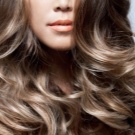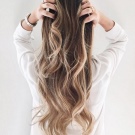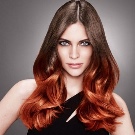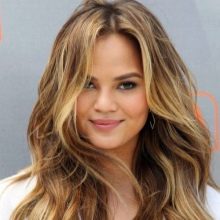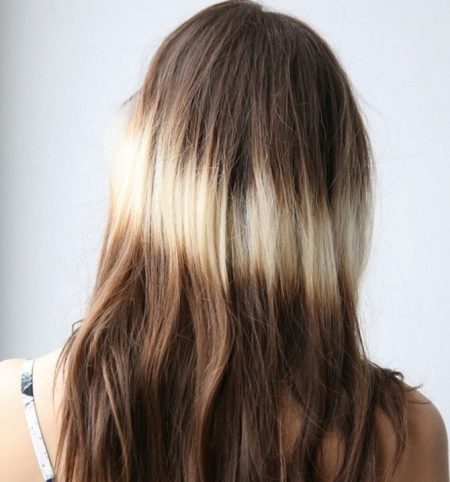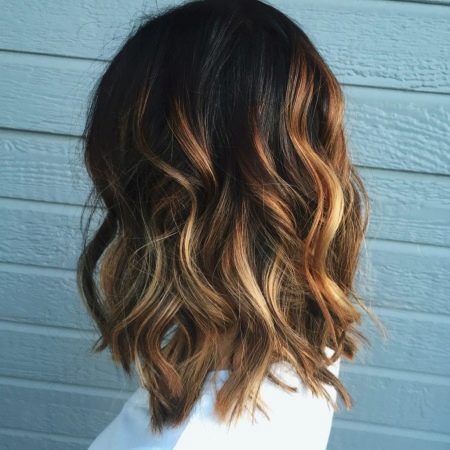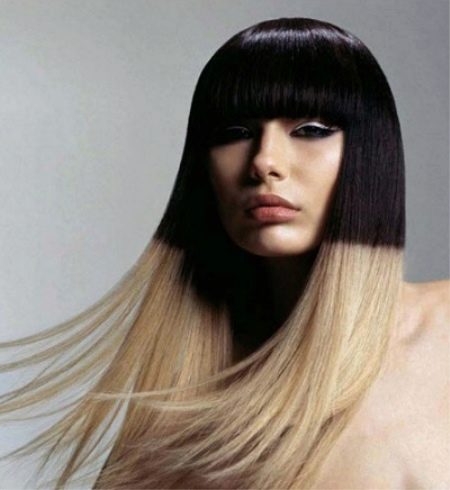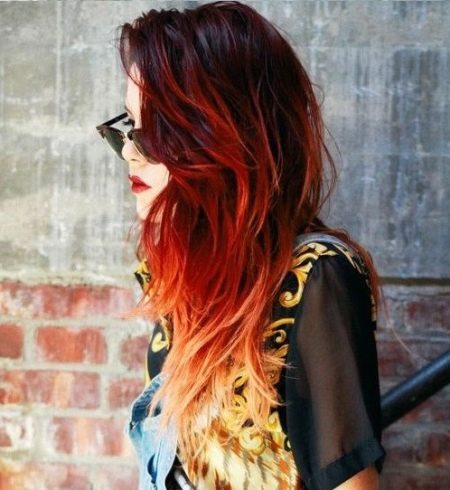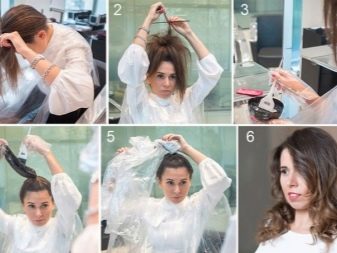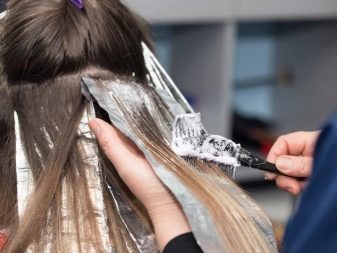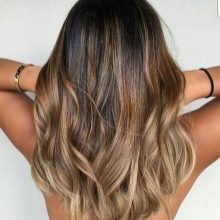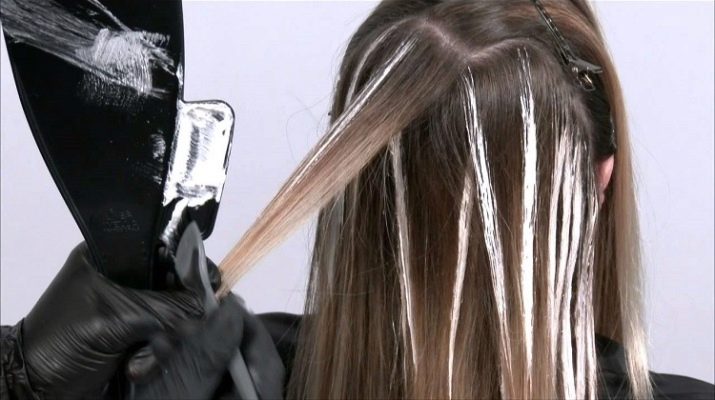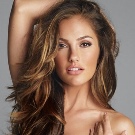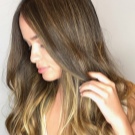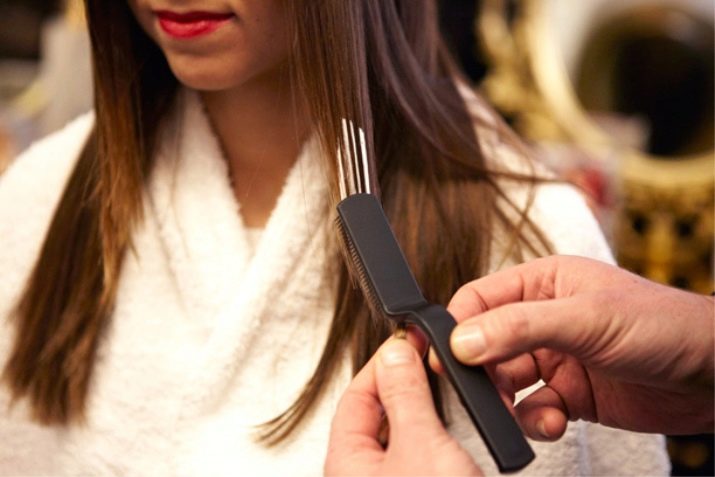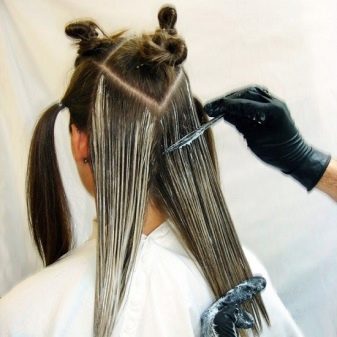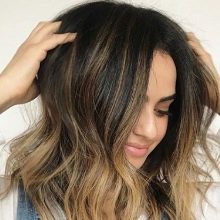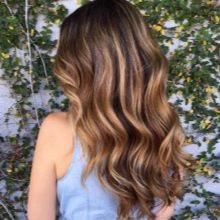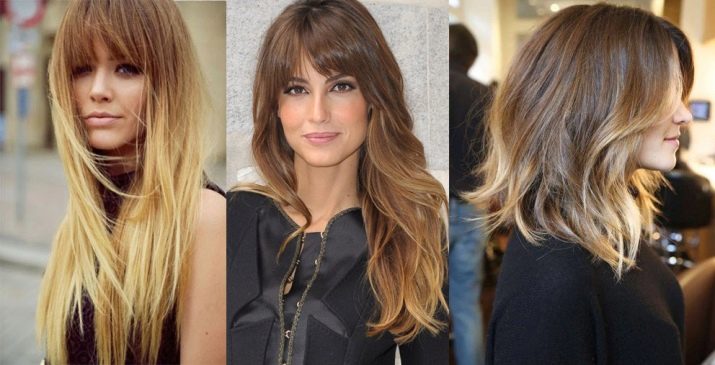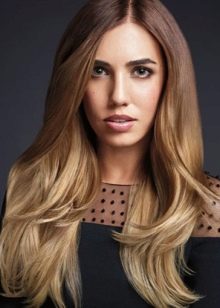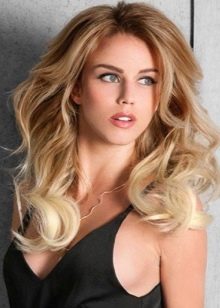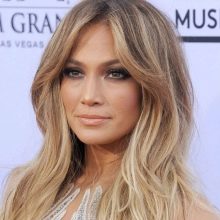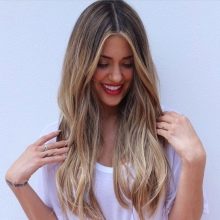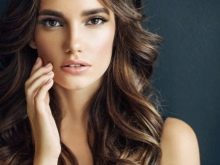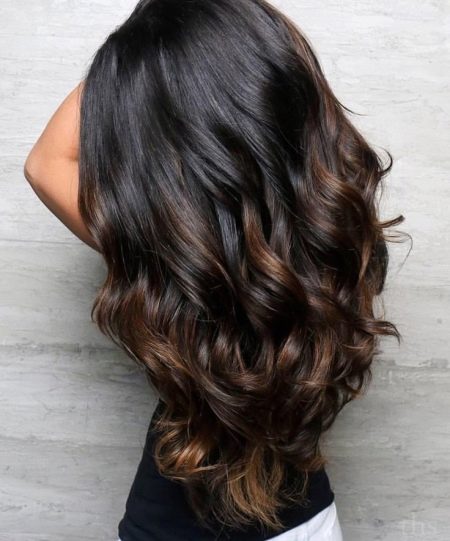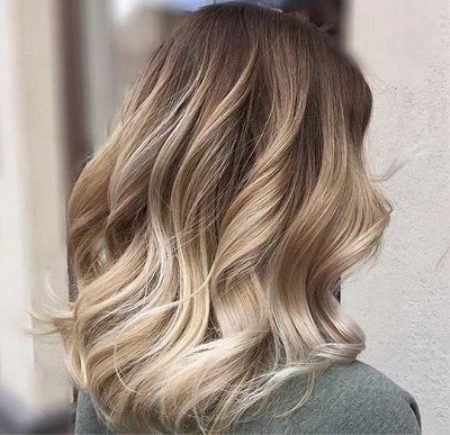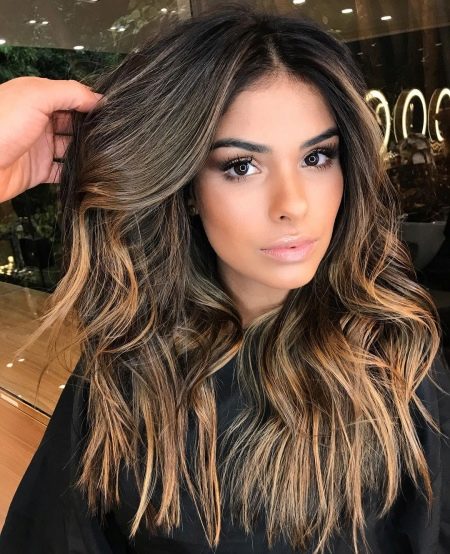Ombre, shatush and balayazh: what is the difference between coloring techniques and which one is better to choose?

Hair dyeing in recent decades has become so popular that about 8 out of 10 women use it on a regular basis. And it is not surprising - by changing the hair color, we completely change our color type, and therefore our whole appearance. Dyed hair looks young, healthy and full of energy. Fashionable tendencies of coloring emphasize the creation of the game of color shades of hair
To achieve this, experts use various methods of radical staining or light toning. Before you go to the hair salon for a new hairstyle, experts advise you to consider not only the shape of the haircut, but also the shades of the color scale, which will most advantageously be able to highlight all the advantages of your hair in a hair style.
What it is?
Experts believe that at the peak of popularity today, such dyeing techniques as shatush, balayazh and ombre have firmly taken the lead. Based on these techniques, you can apply the most unexpected options for the use of color shades, creating different versions of images - from delicate and romantic, to bright and bold. But in order to understand which coloring technique to choose for oneself, one needs to have a clear idea of what their essence is and what differences exist in these techniques.
Such romantic names as ombre, balayazh, shatush, Californian melirovanie, brondirovanie, sombre and many others - are able to confuse anyone and bring to the idea that they all differ little from each other. But this is far from the case. The essence of the difference is that All these types have their own special schemes for applying dyes, the dye stretching is carried out in different ways, the dye exposure time on the hair is different. Thus, with the help of various nuances in the method of hair coloring is obtained in different ways. Let's take a closer look at each type of staining.
Ombre
Such an unusual name of the technique was not without purpose. The French word "ombre" means "shadow", and France has always been considered the trendsetter. The essence of the ombra staining just means the creation on the general canvas of the hair is very blurry, like a shadow, the transition from one color to another. Initially it was conceived that with a dark basal zone, the color, gradually moving to the ends of the strands, changes to a light tone. But later stylists began to use not only natural shades, but also quite bright multi-colored tones. Thus, the ombra today is of the following types:
- classical - the transition of color shades is kept in the border of 1–2 tones, no more, therefore such a color difference turns out to be very soft and natural;
- with contrast bar - the essence of coloring is that if you visually divide the hair into three parts in a horizontal direction, the upper and lower parts will be lighter, and the part between them will be slightly darker;
- partial staining - this method is used if the haircut is done in layers, and to emphasize each layer, certain strands are made slightly lighter than the others;
- highlighting - such ombre implies the creation of light glare areas that seem to highlight some strands in the total mass of hair; such a reception looks especially beautiful on blond hair;
- contrast monochrome - a rather bold decision when two contrasting colors are used, and the border of blending at the same time stands out visually;
- colored - such coloring is not suitable for everyone, because it uses bright unusual colors - pink, purple, turquoise, dark blue, shades of green and others;
- reverse type - coloring is built on the principle of “from the reverse”; if your hair is naturally dark in color, but in the basal area it is brightened, and if you are blonde, then it is the opposite: at the roots, the hair is dyed in dark colors, and the tips are left light;
- strands in the form of fiery tongues - such a technique implies on dark hair to dye strands in bright red or copper-red shades, imitating a flame; the color transition may be blurry, and the selection is a bit chaotic.
Hair coloring using the ombre technique allows you to visually create a large amount of hair, while returning to the original monochrome color is possible at any time and is quite simple - for this, cut off the ends of the hair.
Shatush
In this method of coloring, slightly more shades are used - usually 2-3. But they should be matched as close as possible to the original color of your strands. In the process of dyeing, it is as if the paint is stretched through the hair, and the strands themselves do not cover with foil. This stretch of paint helps to achieve a natural transition from color to color, and visually it looks as if your hair has slightly burned out in the sun. Glare, which turned out on the hair, create a game of color and add liveliness hairstyle.
The technique of applying paint when painting shatush is of two types.
- First view - is performed after the clean and dried hair is lifted from the roots by combing with a comb with frequent and tonic teeth. Many hairs are entangled with each other and, when applied to paint, a more natural effect is obtained by coloring the strands.
- Second kind - stretching the paint on the strands produced without combing them. To achieve the effect of naturalness, use a special brush-comb. Performing such labor-intensive work requires certain skills and patience from the master; the procedure takes much more time than when applying dye to the combed strands.
The technique of shatush is considered one of the most benign methods in dyeing hair. The simplest and most effective is shatush on dark hair, and owners of blond-colored curls will have to deliberately darken the area of the root zone to create a contrast effect. This way of revitalizing the color of your strands is also good in that it helps to quickly and easily move from annoying highlighting, previously done on the hair.
But the most important thing is to find an experienced master who will perfectly perform this procedure, since it is in the quality of the performance that the whole key to success lies.
Balayazh
This technique has something in common with the shatush, it also uses 2–3 colors of the dye and achieve a glare effect on the total weight of the hair, and the glare is located in arbitrary chaos. The balayazh technique differs from the ombra in that the border of the transitions to the balayaz is even softer and less noticeable, it should not be visible at all and even more so look defiant bright. In French, the word balayazh means “to sweep,” and the dyeing technique itself implies applying dye to hair with motions that imitate sweeping. When dyeing the strands are not covered with foil - the entire process of oxidation of the dye occurs either with open access of oxygen, or under the polymer film.
There is another interesting point in the process of applying the coloring matter - the result of dyeing will look different if the paint is applied in the form of a Latin V or Russian letter Sh. This approach causes a smooth transition of color shades, and then less in need of correction after the growth of strands.The dyeing technique is rather laborious and requires high mastery of execution; you yourself are unlikely to be able to reproduce this procedure at home. Coloring in the style of balayazh can be done on natural hair, it is suitable for dyed hair, as well as help those who have already encountered the problem of masking the initial stage of gray hair.
The main differences
At first glance it may seem that all three methods of staining are similar to each other, but there are significant differences between them.
- Visual naturalness. The most naturalistic way will look shatush and balayazh, as they provide very soft transitions and use dyes in natural colors. The ombre technique permits the use of sharp transition lines and the use of an extravagant color palette.
- Dye application scheme. Evenly, the dye is applied to the strands only using the ombre technique, whereas in the other two methods of dyeing, the coloring matter in the strands is arranged in a chaotic manner.
- The possibility of coloring on the combed strands. If you choose the technique of balayazh, you do not have to create a pile on the strands, and then disassemble it. Two other coloring techniques allow for a smooth distribution of color highlights to apply coloring pigment on the combed strands.
- Location location light tones. In this question, each method is unique. The ombre technique implies highlighting of the ends of the strands, the shatush accentuates the strands in bright shades from the middle of the length of the curl, and the balayazh touches the hair along the entire length in bright colors.
- The optimal size of the strands in length. To obtain the desired effect, hair length is of great importance. Balayazh will be appropriate for the average length of hair, but the longer they are, the more beautiful the coloring looks. Ombre does not make sense if the hair has not reached the length at least until the middle of the neck. If you have a short haircut, the creation of a game of color and glare can only be done using the shatush method.
As a rule, coloring done on long or medium hair does not need to be corrected. You can calmly grow your hair further, while the regrowth will not look untidy. If you choose balayazh for yourself, then be prepared for the fact that after 2-3 months you will have to repeat the coloring procedure again.
Difference with other technicians
It is necessary to consider in more detail what is the difference with other methods of hair coloring.
- In addition to the traditional ombre, a hairdresser may suggest you sombre staining. Both of these techniques are similar, but sombre paint technology implies a softer and more gentle approach. Transitions shades will not be so sharp, and the colors will look more relaxed.
- If you want to achieve the highest degree of naturalness of shades and at the same time get hair with blond strands, as if burned out in the sun, pay attention to American dyeing technique called Californian watering. Lightening occurs on thin strands, and in the process of dyeing does not imply the use of aggressive potent brightening compounds - strands make literally lighter by 1–2 tones, and then they are tinted with dye compositions with a low percentage of oxidant to give them the necessary shade. Lightening strands do from the top of the head along the entire length of the hair.
This method is fundamentally different in its technique of execution from ombre, shatush and balayazh, although the idea of creating light highlights on the hair is common.
- Not less popular and popular consider the method of highlighting, which is called booking Its essence lies in the fact that it creates the effect of the iridescence of several close to each other color shades.Such combinations can be from the lightest blond palettes to chestnut and copper variants - dyeing can be performed on hair of any length and color. Strands of hair are subject to chaotic dyeing, but success depends on how masterfully the master can choose the play of shades and in what order they will be distributed among the strands. Brondirovaniye is considered the most difficult and even in some way jewelry staining method. But if it is done professionally - the effect will be simply amazing.
What is better to choose?
Each of the above hair coloring techniques has its own uniqueness and is somewhat different from the others. Do not rush immediately and radically change your image; coloring should be combined with your hairstyle, color type, general orientation in the style of clothes and even with your behavior patterns. All this together makes up your image. To facilitate your selection process, look at some options for photos.
- Look at how a balayazh-style dyeing technique looks made on dark hair.
- Ombre dyeing on medium hair.
- This is how a shatush technique looks like if applied to light brown hair.
- Blonde hair with shatush dyeing looks very stylish - the secret of success here lies in beautiful and long curls.
- But what shatush looks like when dyeing for short hair.
- One of the options balayazha for brunettes.
- And for the most courageous, you can try the colored ombre.
There can be a large number of options, the main thing is that you like them and emphasize your natural beauty. Try different images, look for what suits you. Modern color is now in service with a fairly large set of possibilities so that each woman becomes unique and unique in her own way.
In the next video you are waiting for useful tips colorist for impeccable coloring shatush, balayazh and ombre.


